From Challenges to the Future: Embracing the Era of Intelligence with Wireless Networks
![]() 07/30 2025
07/30 2025
![]() 409
409
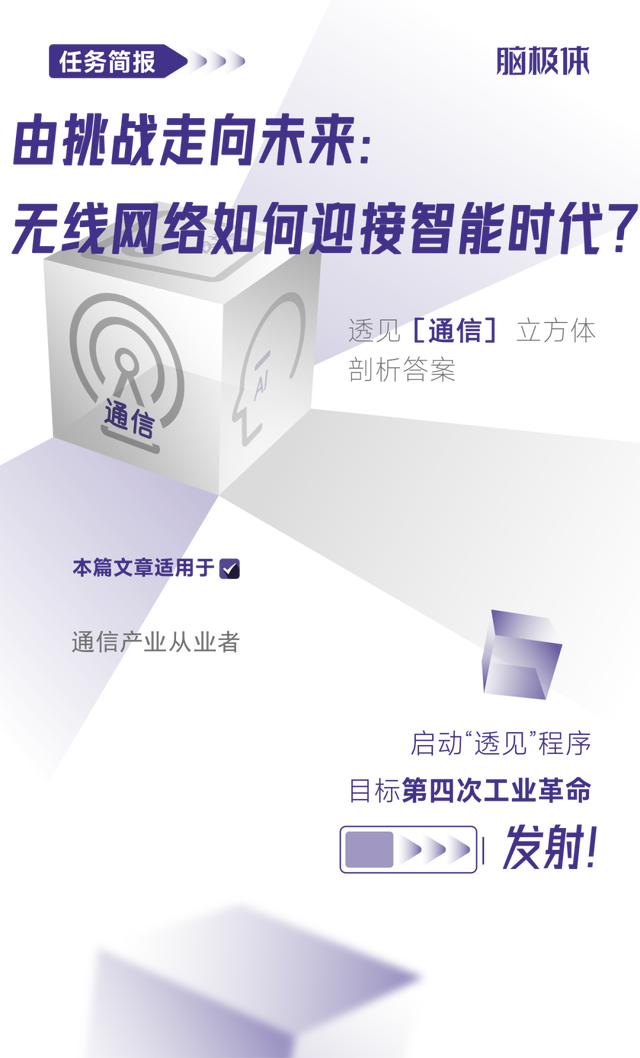
Today's human civilization stands on the shoulders of decades of rapid wireless network advancements.
We effortlessly stream videos and play games on smartphones, work remotely from anywhere, manage smart homes, navigate with intelligent vehicles, and oversee humming industrial internet devices in factories. Scenes once confined to science fiction are now a reality, thanks to the relentless progress of wireless networks. Since the information revolution, every leap in digitization and intelligence has relied on the evolution of wireless networks. As technology surges forward, our demands for bandwidth, latency, and operational efficiency continue to soar.
Ray Kurzweil posited in "The Singularity is Near" that with the advancement of AI, human industrial civilization, and even our existential philosophy, are nearing a critical threshold of transformation. From the emergence of intelligent phenomena to the liberation of productivity across industries through AI, AI has become a singularity in socio-economic development. In this context, expectations for wireless networks in the AI era are skyrocketing.
The 2025 World Artificial Intelligence Conference (WAIC) was held in Shanghai from July 26 to 28. This year's event was the most anticipated and vibrant yet. A notable trend emerged: besides the focus on large models, AI computing power, embodied intelligence, and other AI hotspots, as well as discussions on AI basic software and hardware, all industry sectors were closely monitoring the interplay between wireless networks and AI. The formal advent of the AI era cannot bypass the pioneering role of wireless networks, a consensus shared by the global AI and communications industries.
So, where do wireless networks go from here after decades of iterative development? How can global operators seize the cross-era opportunities tightly coupled with the AI era?
At the WAIC Radio Forum on July 26, Zhou Hong, Dean of Huawei's Strategic Research Institute, analyzed wireless network technology trends for the next five to ten years and unveiled ten major challenges for wireless networks.
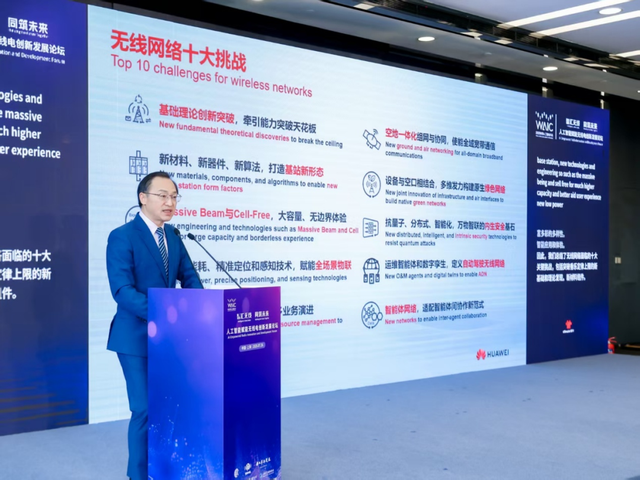
For the communications industry, clear technological challenges point to a definitive business development direction. For everyone in the AI era, the developmental challenges of wireless networks are the stepping stones to the future.
Let us embark on the journey towards the era of intelligence by delving into Huawei's ten major challenges for wireless networks.

From the telegraph era to today's prevalent 5G-A, the progress of human civilization in the modern world can be traced back to the leading role of wireless networks at every step. As large models usher in intelligence opportunities, autonomous vehicles, robots, and XR experiences emerge from the future. The widespread application of AI technology has led to an exponential growth in demand for wireless networks. From the WAIC scene to the entire AI era, all our envisioned blueprints hinge on an omnipresent and robust wireless network.
Zhou Hong mentioned that in 2018, large models had approximately 117 million parameters, growing to 1.5 billion in 2019, 175 billion in 2020, and reaching 1.8 trillion in 2023—a 15,000-fold increase in just five years. In the future, new AI applications, scientific breakthroughs, and policies will propel the information industry forward, increasing communication capabilities by 100 to 1000 times and computational capabilities by 1000 to 10,000 times.

It is evident that the explosion of AI technology has sparked a surge in communication demand. This positive feedback loop will catalyze intelligent iterations across various domains, from life to production. For instance, high-definition and 3D audio-video, XR glasses, intelligent connected vehicles, and agent applications will introduce new demands for wireless networks in our daily lives. High-performance, high-reliability, and secure wireless communication will also comprehensively accelerate the pace of industrial intelligence. In coal mines, wireless communication will support intelligent safety inspections, enhancing mine safety and production efficiency. In medical scenarios, wireless network innovation can improve communication efficiency in operating rooms and rationalize the utilization of medical resources. In ports, wireless network innovation supports intelligent applications like remote gantry cranes and driverless container trucks, already helping Tianjin Port realize driverless terminals.
So, how can we upgrade wireless networks to meet the extensive innovation needs of the AI era, spanning life to production? Zhou Hong believes that wireless network innovation breakthroughs need to be grounded in the five pillars of information sensing, communication, computing, storage, and control. On this foundation, we must discover new theories that can approach and surpass Shannon's limit, integrate technologies like integrated sensing and communication (ISAC) and AI into wireless networks, and build new architectures for business and application innovation.
Based on this, Huawei proposed ten major challenges for wireless networks:
1. **Massive Beam and Cell-Free Technologies**: To achieve greater capacity and superior edge experience.
2. **Breakthroughs in Low-Energy Consumption, Precise Positioning, and Sensing Technology**: Enabling full-scenario IoT.
3. **Operation and Maintenance Agents and Digital Twins**: Defining autonomous driving wireless networks.
4. **Fundamental Theoretical Innovations**: Surpassing Shannon's theorem.
5. **New Materials, Devices, and Algorithms**: Creating new forms of base stations.
6. **Heterogeneous Resource Integration Software Technology**: Enabling multi-service evolution.
7. **Air-Ground Integrated Networking and Collaboration**: Enabling ubiquitous broadband communication.
8. **Combining Devices and Air Interfaces**: Building a native green network through multi-dimensional efforts.
9. **Anti-Quantum, Distributed, and Intelligent Security**: The cornerstone of endogenous security for the intelligent connection of all things.
10. **Agent Networks**: Adapting to the new paradigm of collaboration between agents.
Let's delve into three of these challenges to understand how wireless networks become the cornerstone of the AI era and how global operators can harness wireless network innovation to unlock broader value in the era of intelligence.

Today's wireless communication technology is already impressive, but how can we break through the capacity boundary to achieve next-generation wireless network upgrades?
According to the ITU's technical vision for the next-generation wireless network standards under development, key aspects include a threefold increase in spectral efficiency and edge experiences reaching 300M~500Mbps. The former aims to expand pipeline capacity and increase communication speed, while the latter hopes to enhance user experience and provide highly consistent network services.
Massive Beam and Cell-Free technologies are crucial for realizing these ITU visions. Massive Beam employs ultra-large antenna arrays and intelligent algorithms to precisely focus wireless signal energy on user terminals, creating "parallel communication channels" in the spatial dimension. This can achieve ultra-large-scale Massive MIMO, approaching Shannon's limit and potentially tripling spectral efficiency.
Cell-Free technology can transcend the morphological limitations of cellular networks, improving edge performance by over ten times, ensuring consistent network experience anytime and anywhere, and meeting Mobile AI business requirements of 20~100Mbps uplink and 300~500Mbps downlink. From a technical standpoint, Cell-Free enables each user to be served simultaneously by a large number of nearby APs, forming a dedicated communication domain. This transition shifts the focus from a base station-centric to a user-centric wireless network.
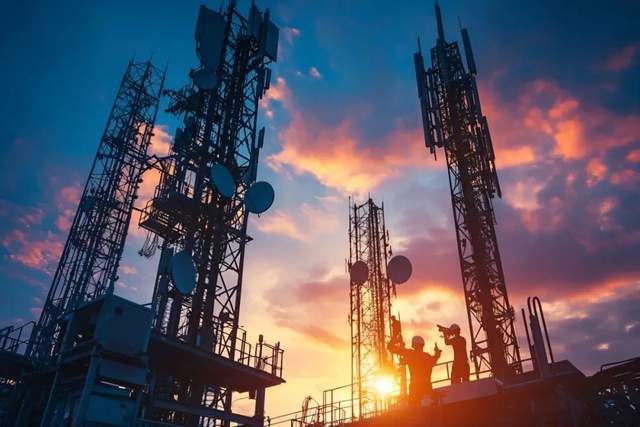
The combination of Massive Beam and Cell-Free is expected to address the dual challenges of improving spectral efficiency and ensuring network consistency in future wireless networks, thereby meeting the network demands stemming from technological innovations like AI agents and AI glasses. For instance, AI glasses equipped with agents need to perform functions like AI object recognition with a response time of hundreds of milliseconds, cross-language real-time translation, and AR navigation. This requires the device to stably upload 4K video at 30 frames per second and voice data at a sampling rate of 16kHz. Large uplink capacity and a consistent experience anytime and anywhere are essential to support mobile agents like AI glasses. Massive Beam + Cell-Free will anchor the future of AI innovation and wireless network evolution.

IoT applications have witnessed significant progress and growth in the 5G era. Looking ahead, the continuous evolution of IoT and its accelerated integration with AI will present new development opportunities for wireless networks. AIoT is accommodating more connected objects, such as the new demands of robot networks driven by embodied intelligence, while also offering richer applications. In ports, mines, and factories, wireless networks are supporting increasingly complex AIoT systems.
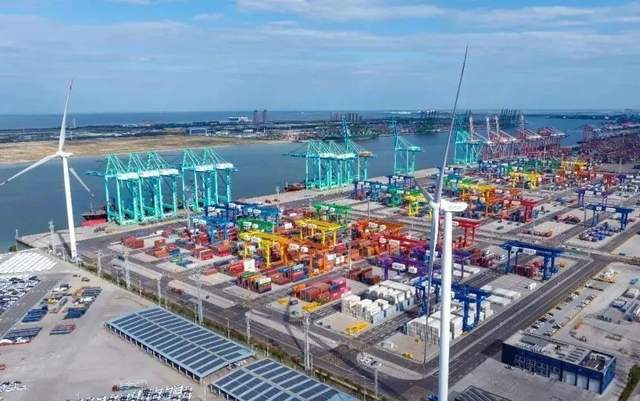
To meet the wireless network demands arising from IoT iterations, Huawei believes that the transition from the Internet of Everything to the Intelligent Connection of All Things requires three key elements: first, full-scenario IoT to connect every object in the physical world and comprehensively collect data on production factors. The combination of 5G lightweight technology, cellular passive IoT (P-IoT), and NB-IoT will meet the wireless network needs in fields like embodied intelligence and intelligent manufacturing; second, 5G-A omni-capable ultra-broadband networks provide multi-dimensional capabilities like gigabit uplink, extremely low latency, and ultra-wide coverage to ensure rapid data transmission to the cloud; third, full intelligence support to reshape core business production processes through industry large models and scenario models, enabling intelligent applications across industries.
Additionally, wireless network development should promote the transition of passive IoT from local area networks to wide area networks, achieving seamless coverage of massive digital tags in large areas and providing new wireless network innovation value for scenarios like industrial production and warehousing logistics.
With the support of wireless network technological innovations, the technical and commercial boundaries of full-scenario IoT will vastly expand, creating business opportunities and blue oceans for global operators to participate in the intelligentization process.

With the continuous development of wireless networks, traditional networks face operational and management challenges such as complex parameters, difficult fault location, and heavy reliance on human experience. As AI technology advances, autonomous driving networks that automatically locate faults and dynamically optimize across all time periods have become the industry norm. Looking ahead, with the implementation of large AI model technology, technologies like operation and maintenance agents and digital twins are expected to deeply integrate with autonomous driving wireless networks, achieving a leapfrog upgrade in wireless network operation and management.
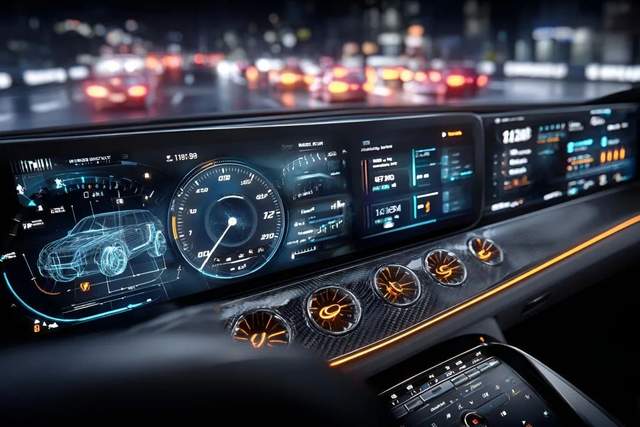
For example, Beijing Unicom, in collaboration with Huawei, has achieved a comprehensive transformation in intelligent network operation through AI technology and innovatively launched a high-speed rail digital twin system. It achieves perceptual accuracy from line grid level to second-level insight into each car and each user, ensuring 100% dynamic visibility of passenger services throughout the journey, significantly improving the operational efficiency and service quality of 5G-A networks.
Looking ahead, autonomous driving wireless networks fully integrated with AI technology will become a powerful tool for operators to reduce operational costs and enhance network operation and maintenance efficiency. The operation and maintenance agent + RAN digital twin system will be the key technical path for autonomous driving wireless networks. Operation and maintenance agents may include emergency response agents, energy-saving agents, orchestration agents, etc., helping operators establish an end-to-end unmanned automatic operation and maintenance system. The RAN digital twin system will provide a precise spatio-temporal description of the network through high-precision positioning and utilize graph neural networks for computer simulation of network behavior, enabling highly intelligent decision-making for network behavior.
Autonomous driving wireless networks will significantly slash operation and maintenance costs for operators, while paving the way for innovative business models, thereby aiding operators in expanding their business horizons in the AI era.

Currently, various sectors exhibit considerable enthusiasm for breakthroughs and applications in AI technology. However, there remains a nebulous understanding of the network requirements for the AI era. A genuine lack of effective technological evolution solutions and industry breakthrough pathways persists. The crux of the ten major challenges for wireless networks lies in Huawei's comprehensive proposal of forward-looking development directions and technological visions. This is based on Huawei's profound expertise in wireless communication technology, extensive presence in fields such as AI, computing, and storage, and holistic grasp of the industry's智能化进程.
Collectively, these ten challenge propositions delineate a clear path for innovation and development. With a future-oriented direction in sight, there is also a roadmap to follow. The strategic core of Huawei's ten challenge proposal is to guide the global communications industry in charting a course towards the AI era.

At present, global operators are universally undergoing an upgrade and transformation phase. As Huawei's Rotating Chairman Xu Zhijun mentioned at the MWC Shanghai exhibition, after nearly 40 years of rapid growth, the telecommunications industry has entered an era of technological surplus, saturation of basic consumer needs in major markets, and stagnation in revenue growth. The industry as a whole has transitioned into a period of stable development, with entities striving to uncover new growth opportunities and pathways.
New industrial pathways and growth opportunities necessitate embracing new challenges, technologies, and trends. This strategic approach will not only influence operators' layout for next-generation wireless networks but also propel current technological evolution and commercial growth trajectories. Currently, 5G-Advanced stands at a pivotal development juncture, with new technology-driven industrial opportunities and innovations taking shape. For instance, 5G-Advanced's substantial uplink capacity is becoming a pivotal point for operators to explore new avenues. Human-computer multimodal interaction necessitates ubiquitous 20Mbps uplink capacity, while intelligent cockpits, vehicle-cloud collaboration, and vehicle-road coordination in connected vehicle scenarios demand an uplink of 20Mbps and a latency of 20ms to ensure a high-quality experience. In response, operators have delved into technical exploration and industrial cultivation of 5G's substantial uplink capacity. For example, China Telecom's Smart Uplink Aggregation solution employs AI models to predict channel quality in real-time and achieves five-dimensional coordinated scheduling of time, frequency, and airspace control through AI. This reduces latency by over 30%, boosts uplink speed by over 15%, and enhances edge experience by over 15%, thereby creating a 5G-Advanced network that leads in both experience and energy efficiency.
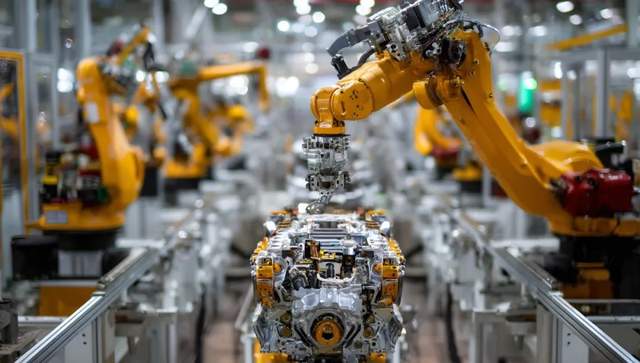
Fueling technological progress through future challenges and exploring commercial potential through technological advancements have become a profound consensus among global operators, from the deep cultivation during the critical period of 5G-Advanced development to the completion of long-term exploration of wireless networks in the AI era.
From transatlantic telegrams to interstellar phone calls, to connecting the world with a single mobile phone, wireless networks have always been at the forefront of the modern era, pioneering technological innovations, and turning our unimaginable visions into reality.
Today, it is challenging to envision how intelligent technology will reshape the world in the next five to ten years. However, one thing is certain: all transformations will originate from wireless networks.
From this perspective, the challenges faced by wireless networks are the stepping stones of human progress.









